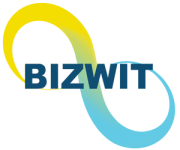Global T-Cell therapy Market is valued at approximately USD 2.8 billion in 2022 and is anticipated to grow with a healthy growth rate of more than 18.3% over the forecast period 2023-2030. T-cell therapy is an innovative and customized kind of immunotherapy that tries to isolate and eradicate cancer cells or other illnesses by harnessing the strength of the patient’s own immune system. T cells, a kind of white blood cell, are extracted from a patient’s body and modified in a laboratory to improve their capacity to recognize and destroy certain cancer cells or disease targets. The main reasons driving the growth of the T-cell therapy market size are an increase in cancer prevalence, an increase in the elderly population, and an increase in the usage of different cell therapy technologies to treat cancer symptoms. Furthermore, the T-cell therapy market is characterized by continual change and expansion, which is largely driven by continuing R&D initiatives and the availability of several medications in the clinical development phase is propelling market expansion. In addition, a rise in promotional activities by manufacturers and an increase in general population knowledge of suitable cancer treatment pharmaceuticals are likely to fuel their adoption all over the projection period.
Moreover, the rising prevalence of cancer has been a key factor in driving the growth of the T-cell therapy market. Cancer continues to be a significant global health concern, with a growing number of individuals being diagnosed each year. This increasing incidence of cancer has created a strong demand for innovative and effective treatment options. According to the World Cancer Research Fund in 2022, there are estimated 18.1 million cancer cases worldwide. Men accounted for 9.3 million of the cases, while women accounted for 8.8 million in 2020. Breast and lung cancers were the most frequent malignancies globally, accounting for 12.5% and 12.2% of all new cases diagnosed in 2020, respectively. Lung cancer was the most frequent disease in men globally, accounting for 15.4% of all new cases diagnosed in 2020. Colorectal cancer was the third most frequent cancer in 2020, with 1.9 million new cases, accounting for 10.7% of all new cases. Additionally, the increasing approvals by regulatory agencies and the increase in the number of research and development activities further provide beneficial opportunities for the thymus cell therapy market growth during the forecast period. However, the high cost of T-Cell therapy stifles market growth throughout the forecast period of 2023-2030.
The key regions considered for the Global T-Cell therapy Market study includes Asia Pacific, North America, Europe, Latin America, and Middle East & Africa. North America dominated the market in 2022 owing to an increase in the occurrence of cancer cases, expansion in funding by private and governmental organizations and well-established research & commercialization basis. Furthermore, the growing senior population in North America has resulted in a higher frequency of cancer, increasing the need for appropriate therapies. According to the National Institute of Health in 2022, 1,918,030 new cancer cases and 609,360 cancer deaths are expected in the United States in 2020, with lung cancer, the leading cause of cancer mortality, accounting for nearly 350 fatalities each day. Asia Pacific is expected to grow significantly during the forecast period, owing to increased research and development in this region. Furthermore, the expansion of healthcare infrastructure and expanding government efforts accelerate the market’s growth rate in this area. For example, the National Library of Medicine in China estimates that in 2022, there are expected to be approximately 88,249 new cases of leukaemia (50,213 male cases and 38,036 female cases).
Major market player included in this report are:
Bristol-Myers Squibb Company
Caribou Biosciences, Inc
Cartesian Therapeutics, Inc.
Johnson & Johnson Pvt. Ltd.
Cellectis, Inc.
Autolus Therapeutics
Immunocore Ltd.
Gilead Sciences, Inc.
Novartis AG
Celyad Oncology SA
Recent Developments in the Market:
Ø In April 2022, The U.S. Food and Drug Administration (FDA) granted the Regenerative Medicine Advanced Therapy (RMAT) designation to Autolus Therapeutics plc, a clinical-stage biopharmaceutical firm, to its lead gene therapy obecabatagene autoleucel (obe-cel). In the current FELIX Phase 2 investigation of adult relapsed/refractory B-Acute Lymphocytic Leukaemia, a CD19-directed autologous chimeric antigen receptor (CAR) T treatment is being examined.
Ø In February 2022, CARVYKTI was approved by the US Food and Drug Administration (FDA) for the treatment of adults with relapsed or refractory multiple myeloma (RRMM) after four or more prior lines of therapy, including a proteasome inhibitor, an immunomodulatory agent, and an anti-CD38 monoclonal antibody.
Global T-Cell therapy Market Report Scope:
ü Historical Data – 2020 – 2021
ü Base Year for Estimation – 2022
ü Forecast period – 2023-2030
ü Report Coverage – Revenue forecast, Company Ranking, Competitive Landscape, Growth factors, and Trends
ü Segments Covered – Type, Indication, End Use, Region
ü Regional Scope – North America; Europe; Asia Pacific; Latin America; Middle East & Africa
ü Customization Scope – Free report customization (equivalent up to 8 analyst’s working hours) with purchase. Addition or alteration to country, regional & segment scope*
The objective of the study is to define market sizes of different segments & countries in recent years and to forecast the values to the coming years. The report is designed to incorporate both qualitative and quantitative aspects of the industry within countries involved in the study.
The report also caters detailed information about the crucial aspects such as driving factors & challenges which will define the future growth of the market. Additionally, it also incorporates potential opportunities in micro markets for stakeholders to invest along with the detailed analysis of competitive landscape and product offerings of key players. The detailed segments and sub-segment of the market are explained below:
By Type:
CAR T-Cell therapy
T-Cell Receptor-Based
By Indication:
Lymphoma
Acute Lymphocytic Leukemia
Others
By End Use:
Hospitals
Cancer Treatment Centers
By Region:
North America
U.S.
Canada
Europe
UK
Germany
France
Spain
Italy
ROE
Asia Pacific
China
India
Japan
Australia
South Korea
RoAPAC
Latin America
Brazil
Mexico
Middle East & Africa
Saudi Arabia
South Africa
Rest of Middle East & Africa



